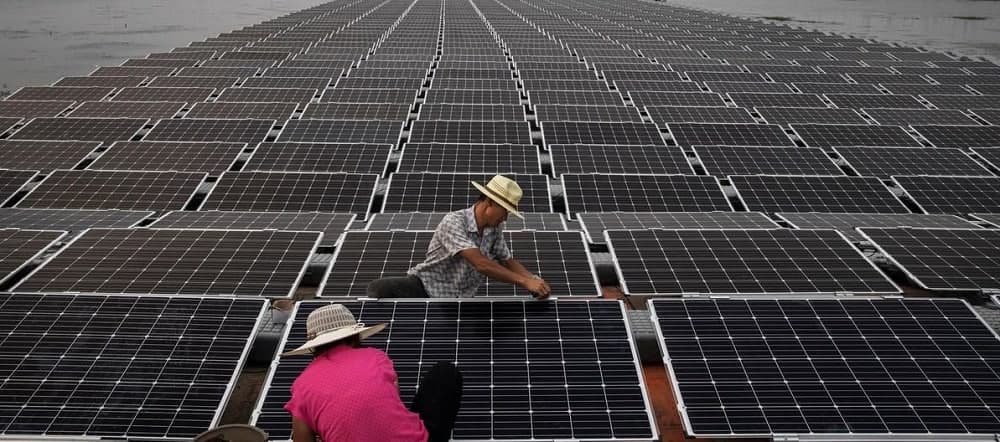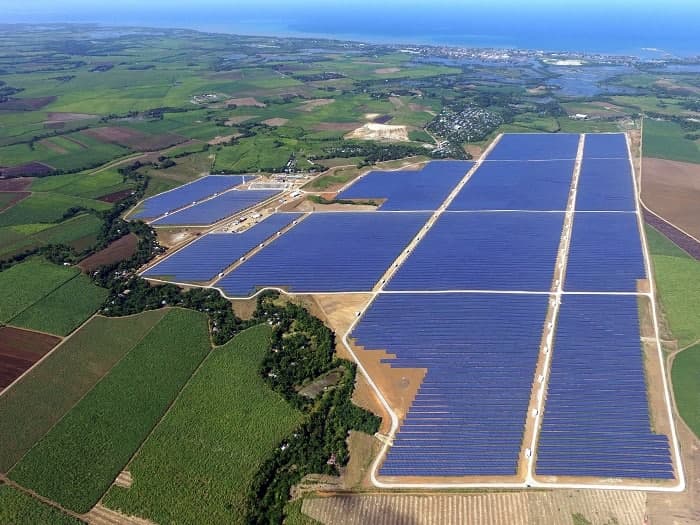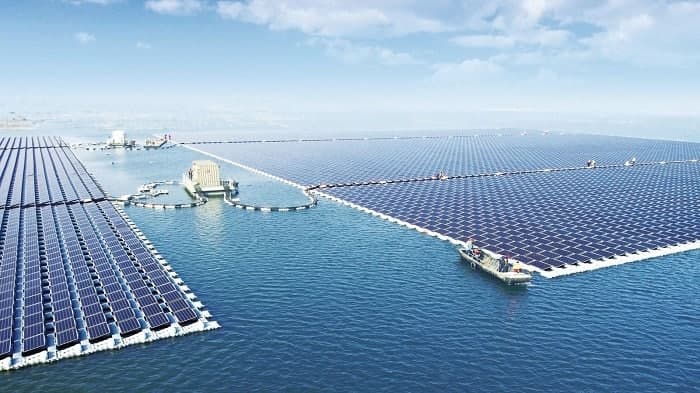Welcome to Linquip Blog. Today we want to present some information about one of the most important facilities that humans have seen so far. Solar Farm is a phenomenon that will save mankind from fossil fuels and makes peace between him and nature. firstly, we need to have a definition of what a solar farm is and what it does. In the next step, we will delve into the different types it has and elaborates on its working principle. Then, we reach the tips that we should notice while running a solar park. In the end, we will talk about the future of solar farm and what it brings for humans.
Our team has gathered all of the necessary information on this topic to eliminate the need for reading diverse content on other websites. Stay with us until the end to find the answer to your question on this topic.
What Are Solar Farms?
Solar farms are indeed large-scale solar installations where photovoltaic panels, referred to as solar panels, or means of collecting solar energy, are used to harvest the sun’s power. They’re different than rooftop solar systems and even commercial solar power systems in many important ways.
Solar farms are also known as solar parks and solar power stations. They operate as power plants, just like natural gas power plants or other sources of energy generation that have generated electricity for consumers for the last century. Solar Farms unlike residential and commercial systems, are decentralized and usually consist of ground-mounted solar panels installed across large areas. Mostly, instead of providing power to a local end-user like a homeowner or business, solar farms provide power to the electric grid and are part of the utility’s energy mix.
There are different types of large solar projects, like community solar farms and utility-scale solar farms that we will talk about in the following section. Some solar projects, like those built to power data centers or other large users of solar power, have solar farms built purely for their use.
What Are the Different Types of Solar Farms?
There are two main types of Solar parks called utility solar farms and community solar farms and the biggest difference between them is about the scale: utility-scale solar farms tend to be much larger than those community solar farms. Utility-scale solar farms can have a capacity of 1 MW to 2,000 MW. While community solar farms are typically under 5 MW in size, and it’s not uncommon to find ones that are under 100 kW.
There is also another key difference between the two types of solar farms and it is about who they provide their power to Community solar farm projects serve subscribers or members who have paid for a share of its power. Utility solar farms, on the other hand, serve the utility company and all of its customers as part of the energy mix it carries on its power lines.
How Do Solar Farms Work?
Explaining how solar panels work is very simple. Solar electric panels create electricity directly from sunlight. When sunlight hits the panels, semiconductors inside the solar panels are activated to produce usable electricity. In a solar farm, many individual solar panels are grouped to produce a lot of electricity. Mostly, panels are mounted on “single-axis tracking systems.” Solar panels are attached to horizontal poles which run north to south. Throughout the day the panels rotate from east to west to follow the sun. The equipment in a solar farm includes solar panels, racking, cables, inverters, transformers, and a power line or substation to deliver the power to the electric transmission grid.
What Should Be Considered to Establish a Solar Farm?
We have listed the top questions asked by those interested in establishing a solar farm on their property. Let’s see what should be considered while you are starting a solar farm.
-
How Much Land Does a Solar Farm Occupy?
According to some research, with all the equipment and space between panel rows, a 1 MW solar farm typically needs 6–8 acres. You have to notice that with large solar projects, it is not just about the space for the solar arrays. The land is also required to house allied equipment like inverters, and space needs to be left between rows of solar panels for repair and maintenance access.
-
How Long Does It Take to Establish a Solar Farm?
The construction of a solar farm can be completed in a matter of months depending on the size of the solar project and the number of people working on it. Siting and permitting, however, is a lot more complicated. It can take 3 to 5 years to get all the necessary approvals and contracts completed for a solar farm. After a solar farm is complete and online, it needs little maintenance and can be serviced about 3 to 4 times a year.
-
How Much Money Can You Make Out of a Solar Farm?
In terms of revenue, you can earn $40,000 per year by selling the electricity from a 1 MW solar farm. In the following lines, we will explain how solar farms generate revenue.
Utility-scale solar farms sell their power by entering Purchase-Power Agreements for their generation on the wholesale electricity market. This can be done by using electricity marketplaces.
Based on the national average of four peak sun hours per day, we know that the average 1 MW solar farm would make 1,460 MWh per year. it means that the average 1 MW solar farm can expect annual revenue of roughly $40,000 per year. it, of course, is just an average figure and will vary based on factors such as solar power production in your area and the going rate for solar generation in the wholesale market.
What Awaits Us in the Future of Solar Farms?
Moving forward, community solar projects, utility-scale solar projects, and rooftop solar systems will all be part of the renewable energy solution providing clean energy around the world and replacing fossil fuel power.
Large-scale solar will continue to get cheaper as developers of solar farms find more ways to reduce financing costs and equipment costs keep coming down. Expect to see many more solar farms, and even bigger ones, shortly.
Conclusion
In this article, we tried to give you all the essential information about Solar Farms. we brought the basic definitions and then we moved to the different types and their privileges. In the 3rd section, we delved into the working principle and talked about how solar panels and consequently how solar farms work. The remaining sections were related to the tips that anyone interested in establishing solar farms should notice. All we did in this article was an attempt to make it easier for you to get the answer to the question “What is a solar farm?”.
If you have any experience using any type of solar farm and know more about it, we will be very glad to have your opinions in the comments on our website Linquip. Moreover, if you have any questions about this topic, you can sign up on our website and wait for our experts to answer your questions. Hope you enjoyed reading this article.
Buy Equipment or Ask for a Service
By using Linquip RFQ Service, you can expect to receive quotations from various suppliers across multiple industries and regions.
Click Here to Request a Quotation From Suppliers and Service Providers
Read More On Linquip
- Efficiency of Solar Panels: A Practical Guide
- The Ultimate Guide to Solar Panel Calculation: Harness the Power of the Sun with Linquip
- A Complete Guide To Solar Panel Output
- Your Handy Guide to Solar Panel Installation Cost
- Do Solar Panels Work at Night?
- Which Type of Solar Panel Is the Best?
- Types of Solar Panels: A Simple Guide Assisting You to Have Better Choice
- Difference Between Solar Energy and Wind Energy
- What is the Difference Between Solar Cells and Solar Panels?
- The 10 Best Solar Generator
- A Concise Introduction to Solar Hybrid Power Systems
- The Complete Guide to Polycrystalline Solar Panel: Features, Working Principles, and Applications
- Is Solar Energy Renewable or Nonrenewable: A Clear Answer
- Everything You Need to Know About Monocrystalline Solar Panel
- Types of Solar Energy: Learn the Basics, Get the Most Out of It!







Really useful, Thanks so much.
Thanks for visiting our website and leaving your comment, Joaquin! You are encouraged to visit Linquip Tech News, where you can find similar posts.